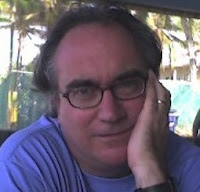J. M. Synge was primarily a playwright, best known for his play The Playboy of the Western World, and one of the leading lights of the "Irish Revival" movement of the late 1800s-early 1900s. The Revival fixed on the Aran Islands as representing the pure, Irish-speaking world it sought to revive, and Synge, an Anglo-Irishman whose uncle had served as the Protestant clergyman to the islands almost fifty years before, went to Aran off and on during the years 1898-1902 to study the Irish language (his Irish is good). He was also an assiduous collector of stories, poems and other folklore, an activity greatly respected and eagerly supported by the islanders. He published The Aran Islands in 1907, the same year that Playboy was first produced at the Abbey Theatre in Dublin.
It is a fine little book, 136 pages filled with stories, both Synge's stories of his experiences and many stories told to him by islanders. There is no politics, no irony, no discussion of Synge's life before or after his time there, nothing about the Irish Revival. There is a great deal of discussion of the Irish language and much trenchant observation of the hard life on the islands, the dangers of putting to sea in the curaghs (large rowing boats), and vivid scenes of island life abound. The islanders are fascinated by Synge and expect him to entertain them, while he is quick to record everything he can about the "fairies," but it is clear that he achieved a measure of intimacy with these very rough people that few if any other outsiders have ever accomplished. An ancient stone lookout seat high on Inishmaan (an anglicization of Inis Meain, "middle island") is to this day known as Synge's Seat.
A nice little gem of a book, very little known. My Penguin Twentieth-Century Classics 1992 paperback edition has excellent footnotes and an extensive introduction by Tim Robinson (I always read the text before the introduction of any book, but in the case of non-fiction maybe that's not quite so important; in any event Robinson's apparatus is worth reading). Synge scholars can also identify sources here for several of the plays. Indispensable for the Irish literature enthusiast and certainly one of the best popular sources on the Arans.
Subscribe to:
Post Comments (Atom)



























No comments:
Post a Comment